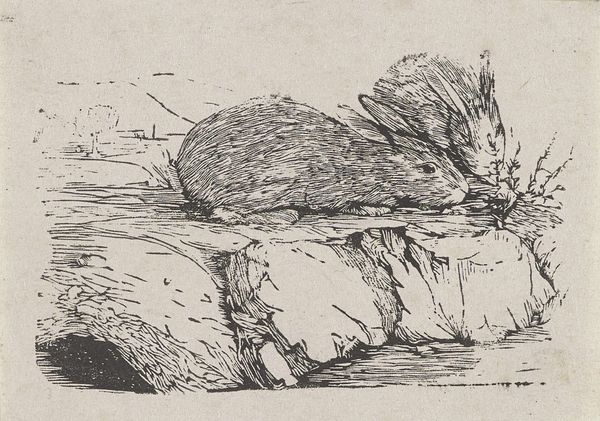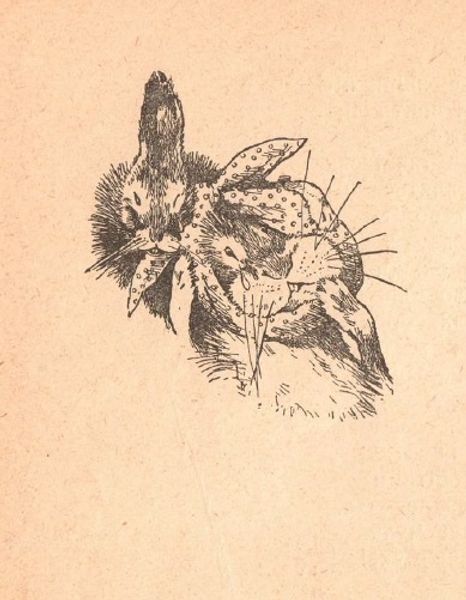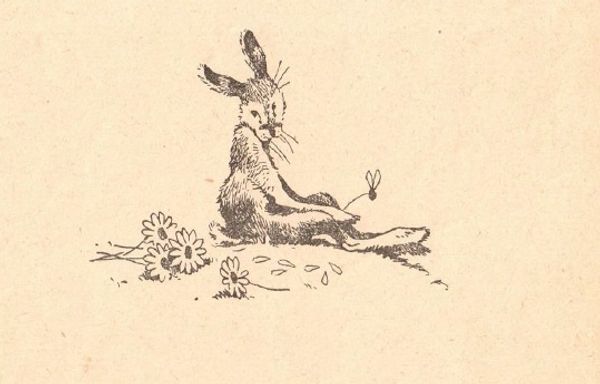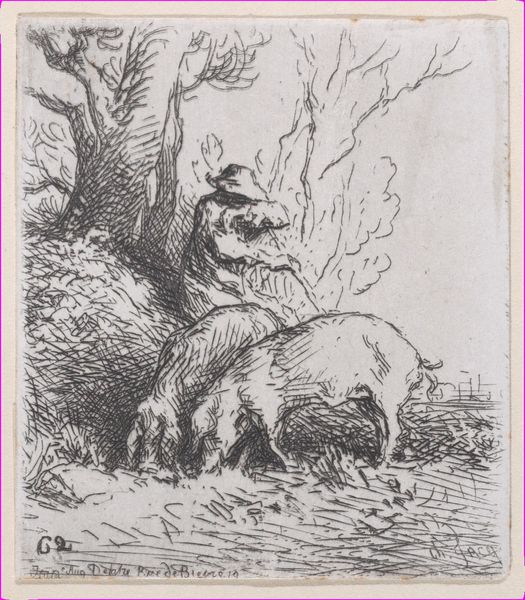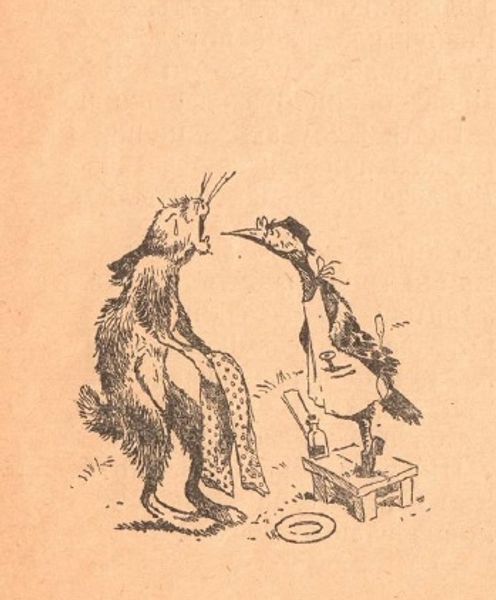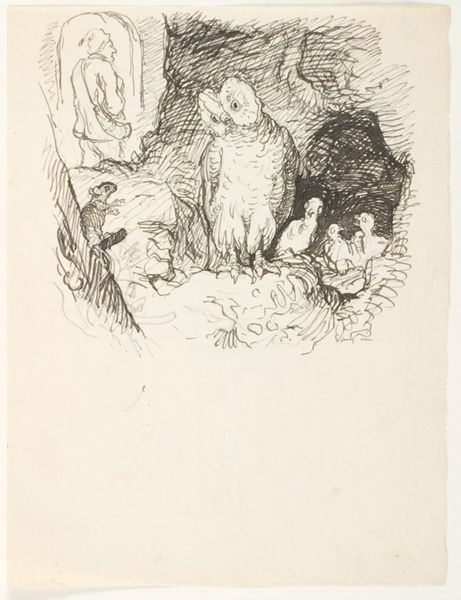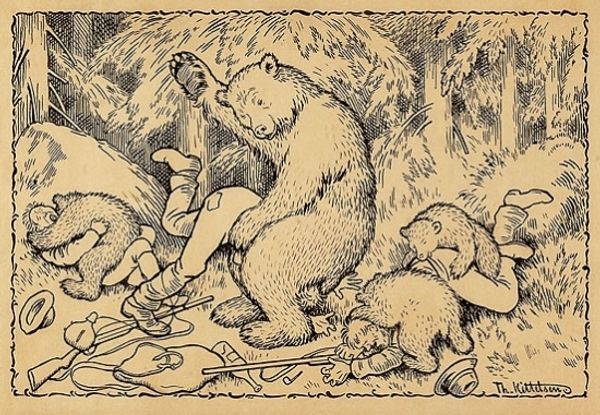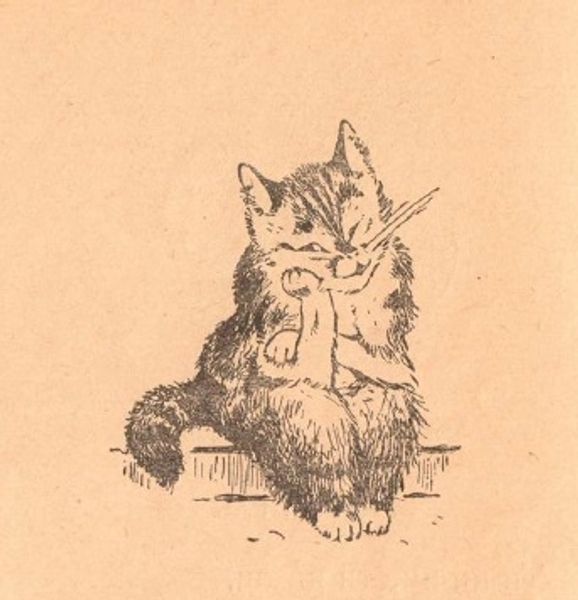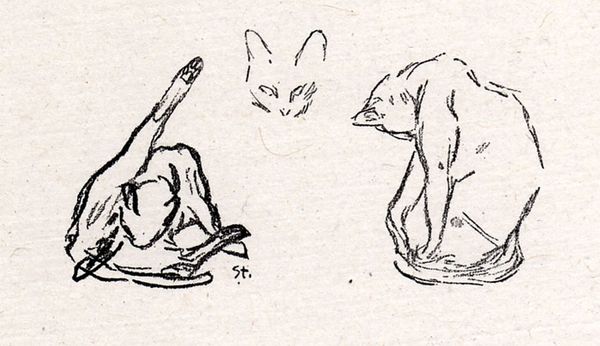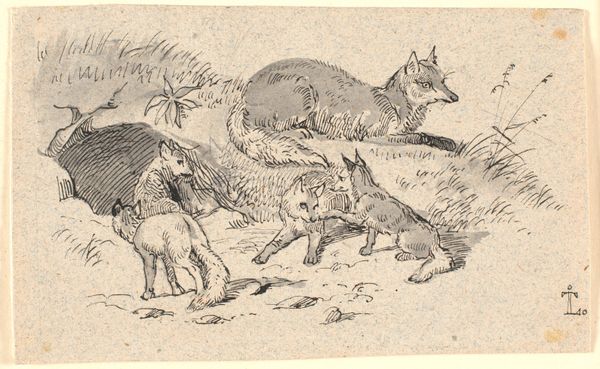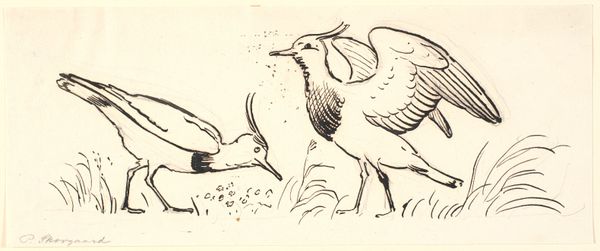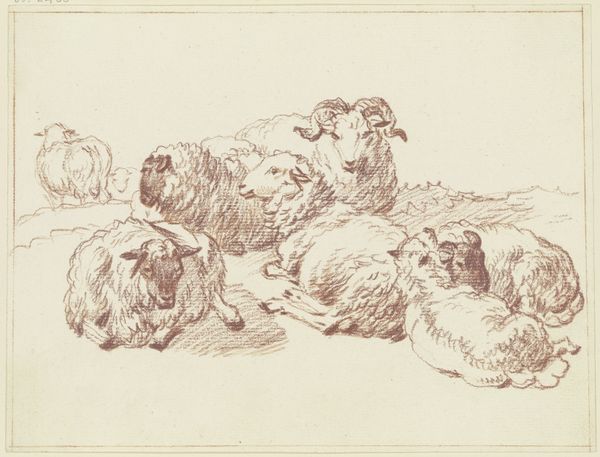
Illustration for Mikhail Stelmakh's book 'In the Hedgehog's Windmill' 1956
0:00
0:00
drawing, ink, pen
#
drawing
#
animal
#
figuration
#
ink
#
pen
#
genre-painting
Copyright: Hryhorii Havrylenko,Fair Use
Editor: Here we have Hryhorii Havrylenko’s 1956 ink and pen drawing, "Illustration for Mikhail Stelmakh's book 'In the Hedgehog's Windmill.'" The simple rendering of the animals feels like it was made quickly with not much effort. What’s your perspective on it? Curator: From a materialist standpoint, consider the tools available to Havrylenko and the broader printmaking industry in the Soviet Union during the mid-20th century. This illustration wasn't meant to stand alone as "high art", but served a purpose to augment Soviet literature. The choice of pen and ink speaks volumes about accessibility and mass production. What kind of paper was likely available, and how might that paper impacted his approach? Editor: That makes sense. It wasn’t about individual artistic expression, more about the industrialization of art. Given its place as an illustration, what do you make of the choice of animals? Curator: The choice to represent animals offers a way to both delight and subtly educate young readers, but also provides insight into Soviet cultural values of the time. What do these animal characters potentially represent regarding the roles and relationships within a society? It raises questions about labor, hierarchy, and the consumption of stories themselves. Who consumes the product of the press? Who creates it, and under what conditions? Editor: I didn't think of the animals that way before! So, it’s about unpacking the power dynamics embedded in a children's book illustration. Curator: Exactly. It compels us to consider the physical means of producing these images and the socio-political climate influencing artistic choices during the period. It highlights art less as self-expression, and more as a social process. Editor: Seeing this drawing through the lens of materials and labor has given me a new understanding of it. Thank you. Curator: Indeed. By studying the materials and processes, we gain insight into a whole world of production and societal values that went into producing even the humblest of images.
Comments
No comments
Be the first to comment and join the conversation on the ultimate creative platform.
